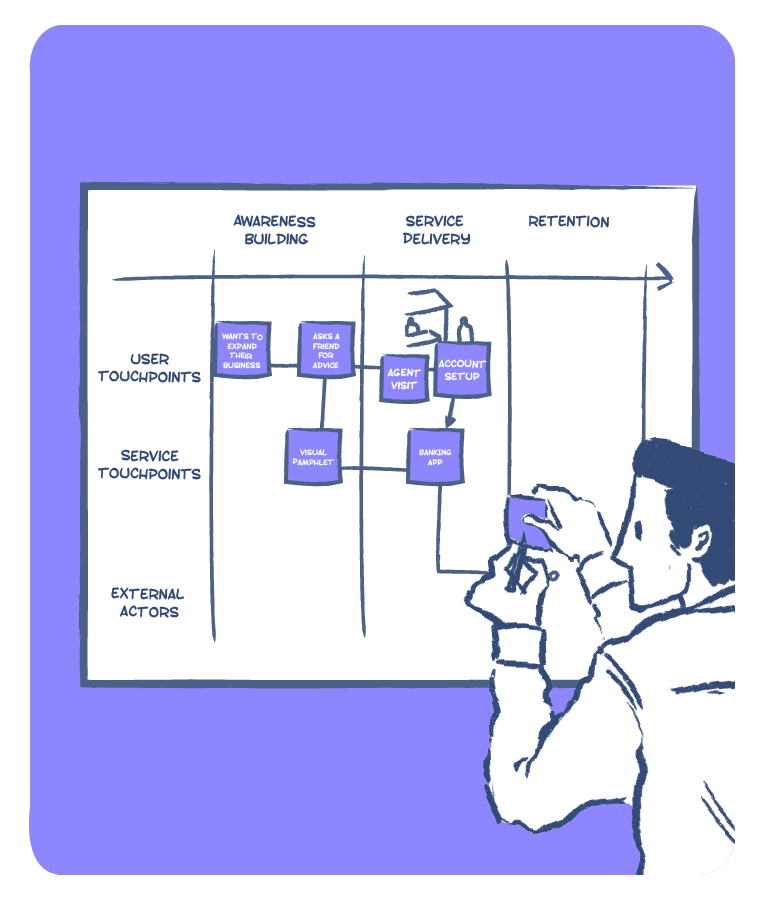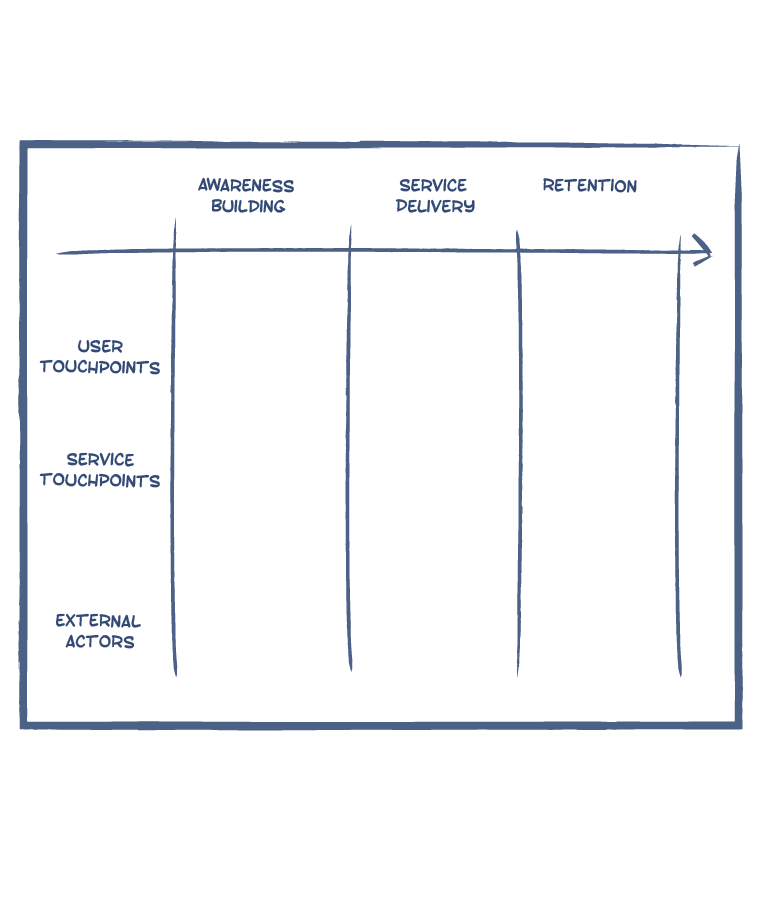HUMAN CENTERED DESIGN | IDEATION
Service Blueprint
60 Min
While a Journey Map focuses on the user journey, the Service Blueprint combines the user and service provider journeys into one frame. The tool helps connect front-end experience (user and service provider) with back-end processes and systems. The Blueprint is one of the core tools for service design.
USE CASES
- Create a holistic service solution that accounts for both front-end, and back-end elements.
- Evaluate how back-end processes and systems may be impacting current user experience, and vice versa.
LIMITATIONS
Connecting front-end and back-end activities and processes can be both confusing and cumbersome. The stages on the template are just one way to think of the journey, teams using the tool should customise it for their own purpose.

